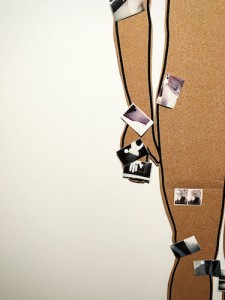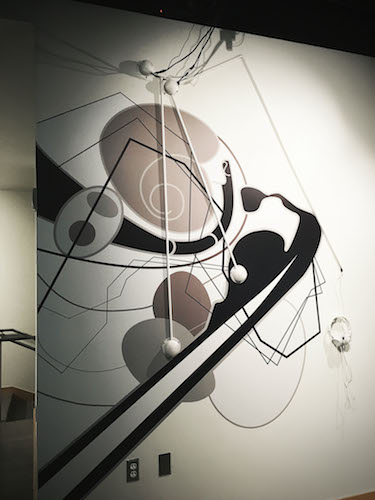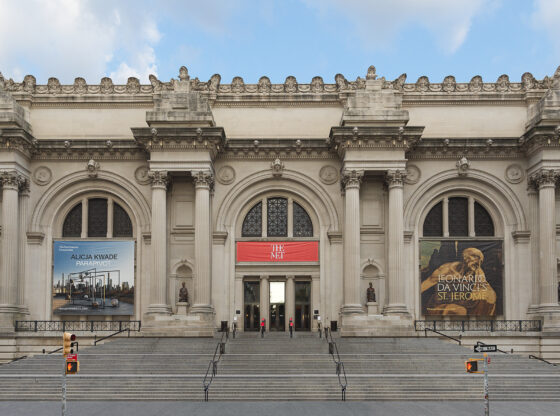Take a walk down the streets of Denver and pass hundreds of people with hundreds of different stories and hundreds of different struggles. Notice a girl of average height, light brown hair, kind face and stylish attire.
All these things are visible.
But what is happening beneath what any stranger can observe? Blurred vision? Burning sensations? Numbness? Loss of control of muscles? Fatigue? Hearing distortions? Confusion? Loss of identity?
Sarah Richter, DU Emergent Digital Practices (EDP) graduate student, has created an exhibit that makes all of these symptoms of Multiple Sclerosis (MS) visible, and “to communicate an existence that is very difficult to describe,” as she states in her artist statement provided at the exhibit.
Richter must live with the constant potential for these symptoms to arise at any point in her day-to-day life with her diagnosis of MS. However, she does not let her inspiring ambitions succumb to what one may consider a disadvantage or even a disability. Instead, she allows them to fuel her passions and pursuit of future fine art exhibitions and teaching.
“Before I got MS, I was doing a lot of things that I only thought I should be doing based on what I perceived to be the expectations of others,” said Richter. “But in April of 2009, I was diagnosed with MS and I found my authentic self. I finally realized what I needed to be doing.”

Ruth Hollenback | Clarion
Sarah’s experience studying EDP at DU and her unusually positive outlook on her diagnosis with MS opened up the opportunity to create this exhibit through the Rocky Mountain MS Center’s affiliation with CU Anschutz Medical School. She submitted a proposal for it last summer, and, after six months of hard work, the exhibit opened on Dec. 10. It will close Mar. 4, and is located at the Fulginiti Pavilion for Bioethics and Humanities at the Anschutz Medical Campus, 13080 East 19th Ave., Aurora. The gallery is open Monday through Friday from 9 a.m. until 5 p.m. and is free of charge for any visitors.
Richter describes her time studying EDP as “a new frontier” and an “exciting exploration of how [she] can incorporate technology through art practices.” This study concentration is an unparalleled opportunity that sets DU apart from many other universities—the program’s purpose is to bring together technology, art, creativity and culture to develop innovations for the future.
Richter explains that her “main hope is that her gallery starts a conversation… a dialogue about the experience of having MS that is normally so difficult to communicate.” She desires that this exhibit, made up of several different pieces illustrating the symptoms of MS, will be a vehicle through which people will be able to relate to one another.

So far, the impact of the gallery has been monumental in Richter’s eyes: since the gallery opening, she has had many people approach her explaining that they could relate to the beauty of the exhibit with associations of ailments other than MS as well; playing in the background of the exhibit is also soothing piano music recorded and played by people who have seen the exhibit.
Do not miss the opportunity to experience the invisible symptoms of MS at Sarah Richter’s “Sensory Paradox: An Artist’s Experience with Multiple Sclerosis.”











